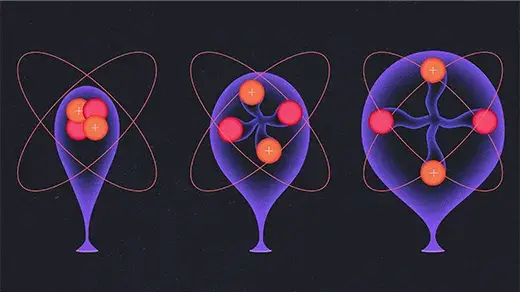- cross-posted to:
- physics@mander.xyz
- scienza@feddit.it
- cross-posted to:
- physics@mander.xyz
- scienza@feddit.it
helium nuclei didn’t swell according to plan: They ballooned more than expected before they burst. A measurement describing that expansion, called the form factor, is twice as large as theoretical predictions.
I can see four possibilities here:
- wrong constant value, smaller or bigger than what it was “supposed” to be.
- wrong formula, with the same variables - the disparity should be more obvious for larger atoms.
- not accounting for some additional force - should be similar to #2, as that this force would become more obvious when you have more protons and neutrons interacting
- everything is wrong and we’re completely clueless on this junk, and people in the future will look at the ongoing theories on nuclear behaviour in the same way as we look at the phlogiston, with a “eh, this is funny” smug face.
I firmly believe #4. Even then, #1 should be the easier to test using deuterium and Li-6; tweak the constant to fit the experimental data for He-4, and see if it breaks the model for deuterium too much. If it doesn’t, then check if Li-6 agrees with it; if it doesn’t you probably got #2 and #3 too.
(inb4 if this means contradicting well established previous research, so be it. We [people in general] certainly do not need a repeat of what happened with Millikan’s experiment.)
It worked because it allowed physicists to ignore the less important parts of the equations.
Does anyone here know which are those less important parts? What do they refer to? Is this that sort of simplification like (a+1)² ≃ a² when a >> 1? Or are they associated with something else?



